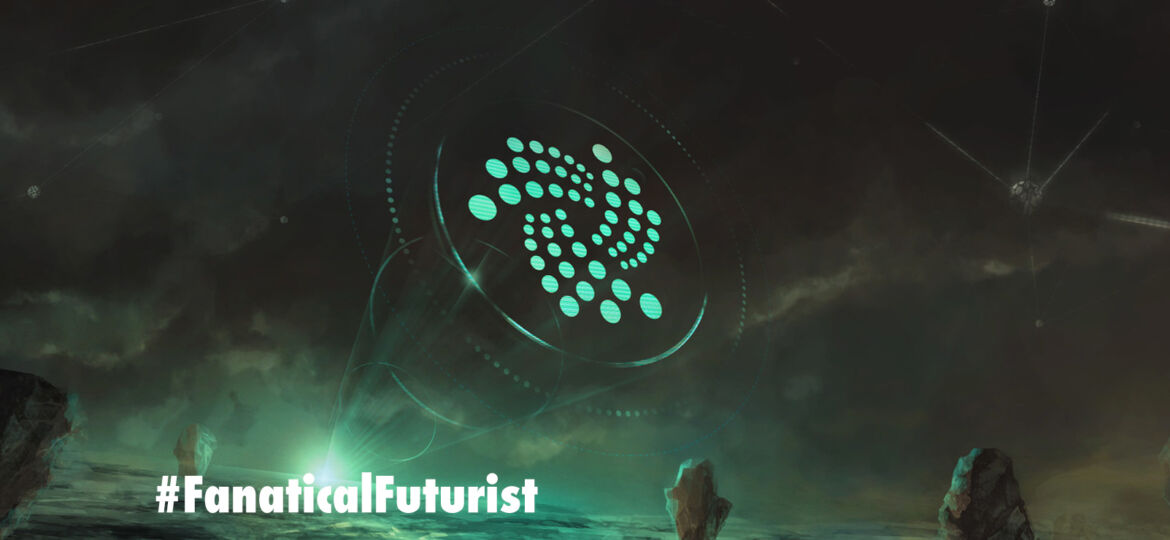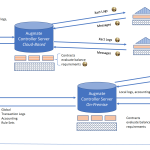
WHY THIS MATTERS IN BRIEF
Mining cryptocurrency is an incredibly contentious, complex, and energy expensive operation, but now a German non-profit has built a cryptocurrency that does away with miners completely, and they’re being backed by the biggest names in tech.
Bitcoin isn’t the only cryptocurrency on a hot streak, plenty of alternative currencies have enjoyed rallies alongside what’s being referred to as Bitcoin’s epic bull run of 2017, and one of those cryptocurrencies that’s benefited from the run is also one of the strangest, and perhaps the most intriguing. Called IOTA it has jumped in total value from just over $4 billion to more than $10 billion in a little over two weeks, but that isn’t what makes it interesting. What makes it interesting is the fact that, unlike it’s other crypto cousins it isn’t based on Blockchain technology at all, it’s based on something completely different.
IOTA’s rally began in late November after the IOTA Foundation, the German non-profit behind the novel cryptocurrency, announced it was teaming up with several major technology firms to develop a “decentralized data marketplace.”
“Though IOTA tokens can be used like any other cryptocurrency, our protocol was designed specifically for use on connected devices,” says cofounder David Sønstebø, adding, “organizations collect huge amounts of data from these gadgets, from weather tracking systems to sensors that monitor the performance of industrial machinery, in other words the from the Internet of Things, but nearly all of that information is wasted, sitting in siloed databases and not making money for its owners.”
Revolution not evolution
IOTA’s system can address this in two ways, he says. First, it can assure the integrity of data by securing it in a tamper proof decentralised ledger, and second, it enables fee less transactions between the owners of the data and anyone who wants to buy it. And there are plenty of companies that want to buy it.
Here’s where things get really interesting though. Instead of a blockchain, IOTA uses what the company calls a “Tangle” that’s based on a mathematical concept called a Directed Acyclic Graph, and which, similar to blockchain’s purpose, lets users reach consensus within IOTA’s decentralised peer to peer system.
How it works
Sønstebø says his team pursued an alternative approach after deciding that Blockchains are too costly, something that’s been in sharp focus recently as it now costs as much as $20 per Bitcoin transaction because of the high demand, plus , he says, Blockchain is inefficient when it comes to operating at the scale required for the Internet of things.
Part of Sønstebø’s issue with Bitcoin and other Blockchain systems it that they rely on a distributed network of “miners” to verify transactions, so IOTA has dispensed with the miners. Instead, when a user issues a transaction, they also validate two randomly selected previous transactions, each of which refer to two other previous transactions, and so on. As new transactions mount, a “tangled web of confirmation” grows, says Sønstebø.
At first glance this new approach to confirmation sounds great, because using miners are an increasing point of contention for many in the Bitcoin and Blockchain community, but as Sønstebø notes, IOTA is still in “very early stage beta,” and the high profile names participating in its data market pilot, including Bosch, Cisco, Huawei, Microsoft, Deutsche Telekom, and Fujitsu, among many others, suggest IOTA might be onto something.
In recent months, though, some prominent members of the cryptocurrency research community have expressed reservations about IOTA’s design and overall security.
In August, researchers from MIT and Boston University reported they’d discovered a “serious vulnerability” in a novel cryptographic technique IOTA was using, a flaw that IOTA quickly patched, and Sønstebø says that security measures in place would have prevented anyone from losing funds, but following on from the discovery the foundation hired a third party firm to help it continue to develop the technique, which Sønstebø says delivers the kind of “lightweight cryptography” needed for low power connected devices, like sensors.
While IOTA’s Tangle is still at an early stage, a distributed ledger technology that behaves like Blockchain but that doesn’t need miners, looks as intriguing as it does appealing, and if it does turn out that IOTA are onto something then who knows maybe blockchain will have some competition and that would be big news. Watch this space.


















That’s a good read Matthew, IOTA is solving one big problem, that’s the speed needed to do a secure transaction in a complex and large world.